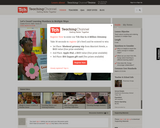
A video to wach to support/and process how teachers are teaching counting to young children
- Subject:
- Mathematics
- Material Type:
- Reference Material
- Provider:
- The Teaching Channel
- Date Added:
- 10/27/2016

A video to wach to support/and process how teachers are teaching counting to young children
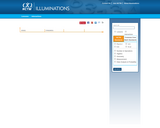
In this unit of 8 lessons, students make groups of zero to 10 objects, learn number names for the groups, compose and decompose numbers, and practice writing numerals to record the size of a group. Each lesson includes visual, auditory, and kinesthetic activities and supporting materials, questions to facilitate student thinking and teacher reflection, assessment suggestions, and a link to online applets that support the unit.
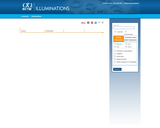
In this 6-lesson unit students develop concepts of number, relationships between numbers, and equality. They make groups of 10 to 20 objects, connect number names to the groups, compose and decompose numbers, and use numerals to record the size of a group. Each lesson includes visual, auditory, and kinesthetic activities, as well as student activity sheets, questions for teachers and students, ideas for assessment and extensions, and links to electronic applets.

In this 5-lesson unit students make groups of zero through five objects and connect number words to the groups. They develop counting strategies and use numerals to record the size of a group. Lessons include familiar nursery rhymes and songs, links to interactive applets, and visual, auditory, and kinesthetic activities. Also included are student activity sheets, questions for students and teachers, assessment and extension ideas.
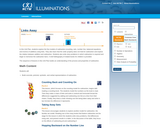
In this unit plan, primary learners explore the five models of subtraction (counting, sets, number line, balanced equations, and inverse of addition) using concrete (links), pictorial, and verbal representations to develop an understanding of symbolic notations. Students also investigate fact families, including those where one addend is 0 and where the addends are alike and also learn that the order (commutative) property) does not hold for subtraction. A brief bibliography of related books for children is provided. Instead of using hands on manipulatives and balances, links to Java applets: Pan Balance-Shapes and Pan Balance-Numbers ( both cataloged separately) are included. Instructional plan, questions for the students, assessment options, extensions,and teacher reflections are given for each lesson as well as links to down load all student resources.
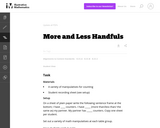
This counting activity is done in pairs and helps reinforce the concepts of greater than, less than, and equal to.

(Nota: Esta es una traducción de un recurso educativo abierto creado por el Departamento de Educación del Estado de Nueva York (NYSED) como parte del proyecto "EngageNY" en 2013. Aunque el recurso real fue traducido por personas, la siguiente descripción se tradujo del inglés original usando Google Translate para ayudar a los usuarios potenciales a decidir si se adapta a sus necesidades y puede contener errores gramaticales o lingüísticos. La descripción original en inglés también se proporciona a continuación.)
Hasta este punto en el Grado K, los estudiantes han trabajado intensamente dentro de 10 y a menudo han contado a 30 utilizando el Rekenrek durante la práctica de fluidez. Este trabajo prepara el escenario para este módulo donde los estudiantes aclaran el significado de los 10 y algunos dentro de un número adolescente y extienden esa comprensión para contar hasta 100.
Encuentre el resto de los recursos matemáticos de Engageny en https://archive.org/details/engageny-mathematics.
English Description:
Up to this point in Grade K, students have worked intensively within 10 and have often counted to 30 using the Rekenrek during fluency practice. This work sets the stage for this module where students clarify the meaning of the 10 ones and some ones within a teen number and extend that understanding to count to 100.
Find the rest of the EngageNY Mathematics resources at https://archive.org/details/engageny-mathematics.
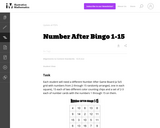
This number after bingo activity increases student flexibility with the number sequence and their ability to start counting sequences at various points.
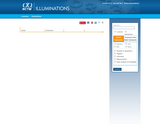
In this six lesson unit, students recognize and explore the relationships among pennies, nickels, dimes, and quarters. They estimate and count sets of mixed coins, create equivalent sets, write story problems that involve money, and use coins to make patterns. Within the unit there is a link to US Mint. http://www.usmint.gov/kids/teachers/
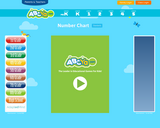
In this online game, students will practice counting in sequence from a given number within a hundreds chart. Students can choose between difficulty levels, which differentiate the number of digits given in the sequence and the number of digits to place within that sequence.
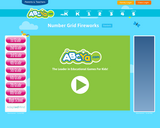
In this online game, students will be given a blank hundreds chart and will be asked to place random numbers into the correct cell within the blank hundreds chart.
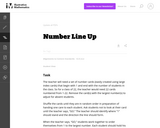
This number line up activitiy gets students out of their seats and helps reinforce the counting sequence.
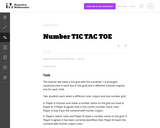
This activity is played in pairs and gives students practice reading numbers out loud and tracing them.
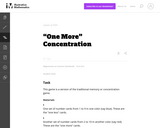
This game game supports students in counting forward and can be adjusted to support backward counting.
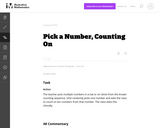
This is a choral counting activity that can be easily adjusted as students learn higher numbers.
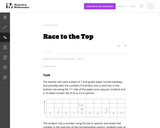
This activity can be played by pairs of students to support writing numbers.
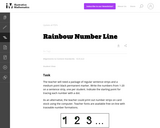
In this number tracing activity students create a rainbow number line. This can be a colorful tool with a personal connection to the student that may be used as a reference. It can serve as a visual and motor reminder when reading and writing numbers because the student went through the tracing motion.
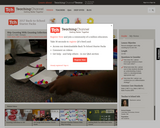
Recording strategies for counting collections when skip counting by 5's and 10's.
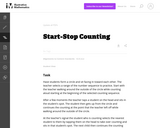
This counting activity allows students to practice counting in sequence.
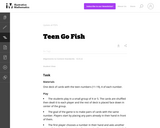
This version of Go Fish allows students to practice recognizing and saying the teen numbers.